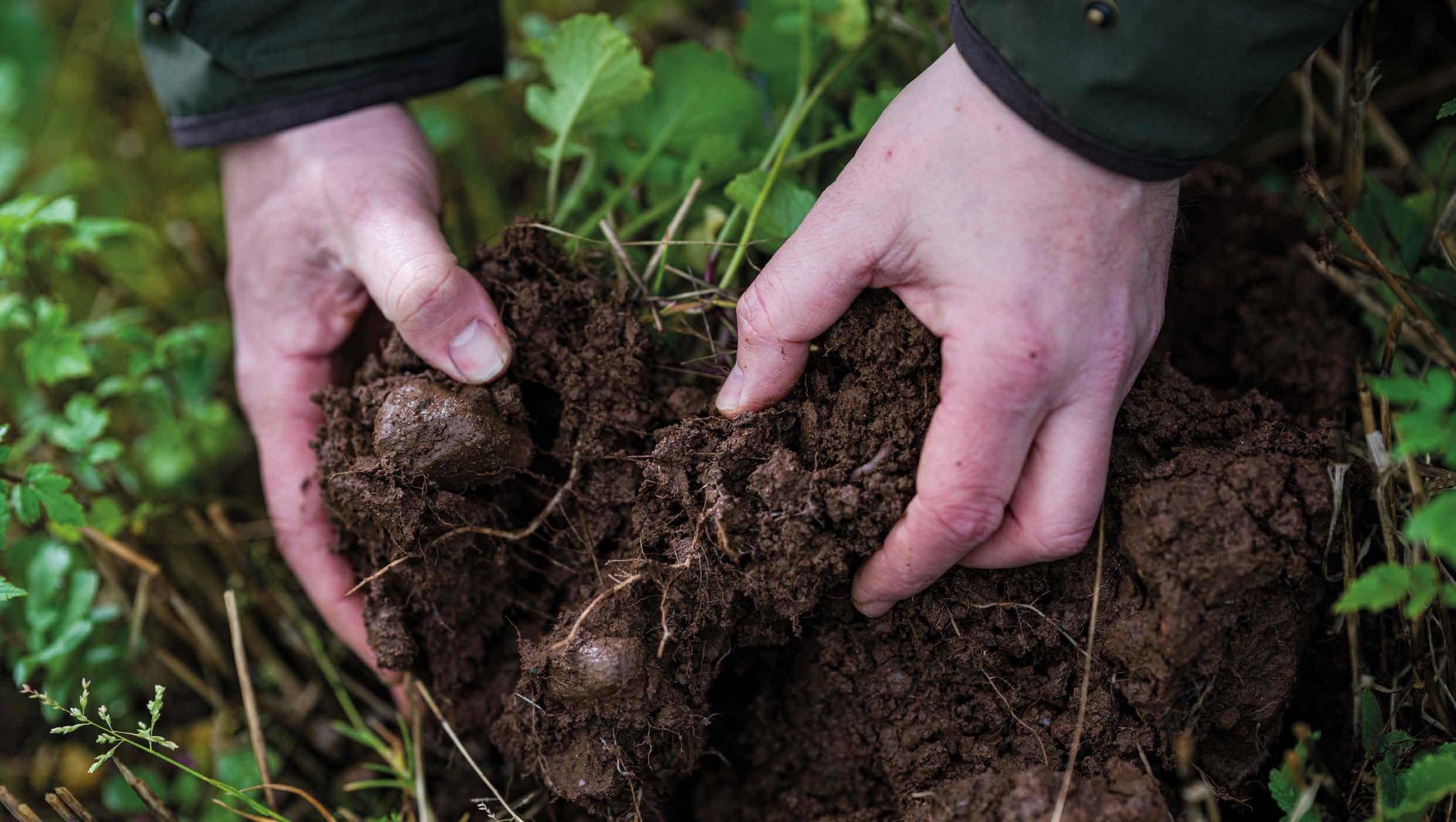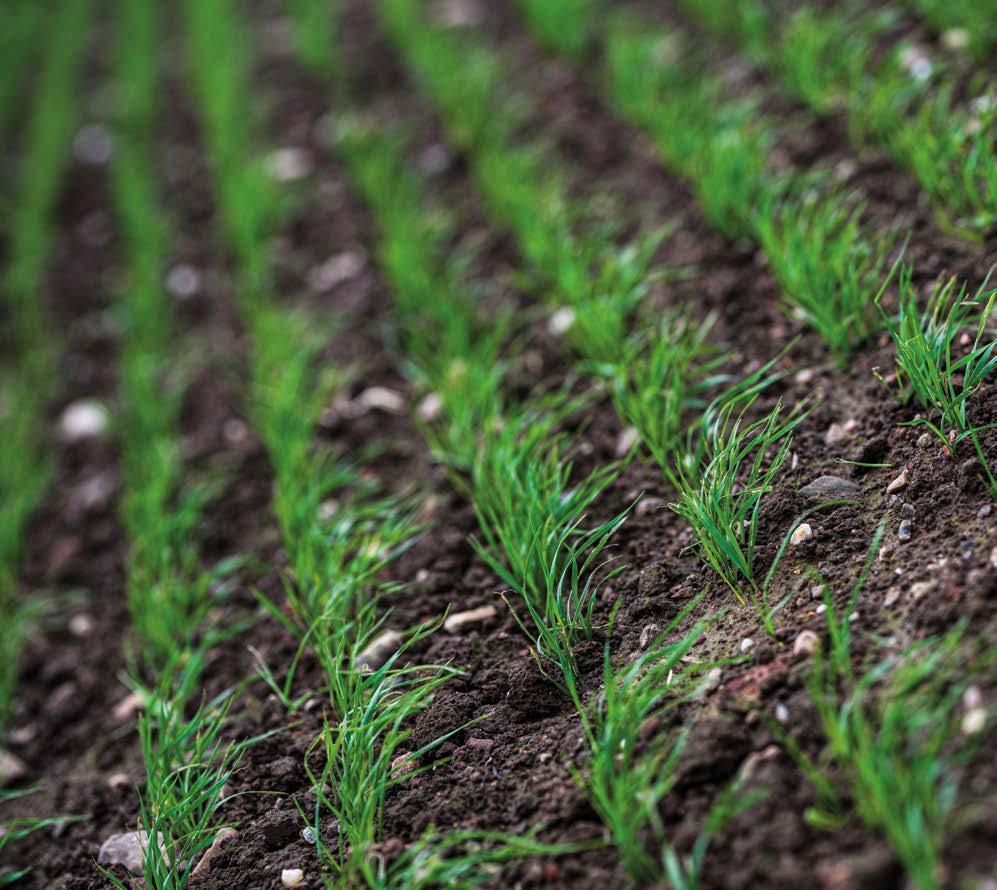
5 minute read
Is soil security still in jeopardy for Scotland?
SARAH BUCKINGHAM, SENIOR ENVIRONMENTAL CONSULTANT, SAC CONSULTING
Those working the land are ever mindful that soils underpin nature-based solutions for climate change mitigation and adaptation, as well as supporting flood resilience, water quality, forestry and future food security. However, a 2024 report by Environmental Standards Scotland (ESS) highlights a range of risks to Scotland’s soils - many of which are still prevalent fifteen years on from the Scottish Soils Framework published by the Scottish Government in 2009.
According to the report, the future security of Scottish soils and subsequent wider environmental services which soils provide, could still be in jeopardy. The main risks outlined included soil compaction, erosion, organic matter and carbon loss, biodiversity loss, contamination, soil-borne disease and pests, as well as reduced water retention capacity (influencing drought tolerance and flood resilience).
ESS claims that Scotland (formerly a world leader with the Soils Framework) is now falling behind international best practice with regards to statutory proposals to monitor and protect soils. It further cites that Scotland’s soils should be protected by law.
Despite the vital role soils play in our environment and economy, and unlike the water sectors, there is currently no overarching policy to protect our valuable soil resource. So how may this change our physical and policy landscapes in the future?
The crucial role soils play in delivering services to our communities, economy and environment has received increasing attention in recent years, particularly in policy developments where more soil-specific objectives have been outlined. The Climate Change Committee identified soils as one of eight priority policy gaps for Scotland in their 2022 report, ‘Is Scotland Ready for Climate Change?’.

However, the current protection of soils in a policy context is somewhat fragmented across different national level strategies and policies. For example, the 2023 National Planning Framework provides a soilspecific policy (Policy 5) which states an aim “to protect carbon-rich soils, restore peatlands and minimise disturbance to soils from development”. The Scottish Government’s Vision for Agriculture (2022) outlines developments in the form of a Whole Farm Plan. It includes soil testing, presents a range of agricultural reform measures that promote continuous soil cover, enhanced crop diversity, reduced inputs of synthetic fertilisers and improved nutrient management. It also highlights retaining and enhancing field margins and permanent habitats - all of which have been shown to support good soil health.
More recently, the 2024 Scottish Biodiversity Strategy outlines objectives with specific reference to soils (Objective 3). It cites a directive to “embed nature positive farming, fishing and forestry”, which includes the action to “ensure increased uptake of high diversity, nature-rich, high soil carbon, low intensity farming methods while sustaining high quality food production”.
However, the disconnected nature of soil-focused policy results in the implementation of actions being fairly concentrated within specific policy themes and/or land use types. This can make it challenging to tackle the landscape-scale soil issues (such as flood resilience, diffuse pollution and biodiversity loss) needed to better protect, restore and enhance soil functionality and associated ecosystem services.
To initiate cohesion across soil-related policy groups, the Scottish Government has commissioned a project through ClimateXChange. It is to develop a route map for Scottish soils as a deliverable to the third Scottish National Adaptation Plan, calling for “landscape scale solutions to be implemented for sustainable and collaborative land use, including protecting and enhancing Scotland’s soils”.
The project reviews where soil protection legislation and frameworks currently exist across Scotland, with the aim of identifying the extent to which soils are (and perhaps are not) protected against the main threats outlined within the Scottish Soil Framework and ESS report.
Synergies between policy objectives will be highlighted in terms of identifying opportunities for collaborative approaches to soil protection, which provide co-delivery across policy themes. The project also explores developments and future opportunities for a Scottish Soil Monitoring Framework, which was initiated in 2009 to further support evidence-led decision making.
As part of the ClimateXChange project, a workshop was held in December 2024 to discuss how to harness and best utilise the data and knowledge we have already, and to explore opportunities to strengthen the potential for baselining soil health and vulnerability to risks across different land uses. We are working to establish understanding of the current state of our soil systems to determine the net impacts of different pressures, as well as provide evidence on the extent to which different management practices can contribute to soil protection, restoration or enhancement.
Our approach also considers developments in EU Soil Monitoring Law and how this relates to Scotland in the context of our specific soil and land use characteristics. Positive initial discussions have made it clear that there are many opportunities for Scotland to develop a more advanced monitoring framework that is more appropriate and beneficial for our landscapes and land uses.
The journey to secure Scotland’s soils is both a challenge and an opportunity. By integrating cohesive policies and leveraging advanced monitoring frameworks, we can safeguard our environment whilst building a resilient and prosperous and thriving soils system benefiting generations to come.

Get in touch: sarah.buckingham@sac.co.uk

